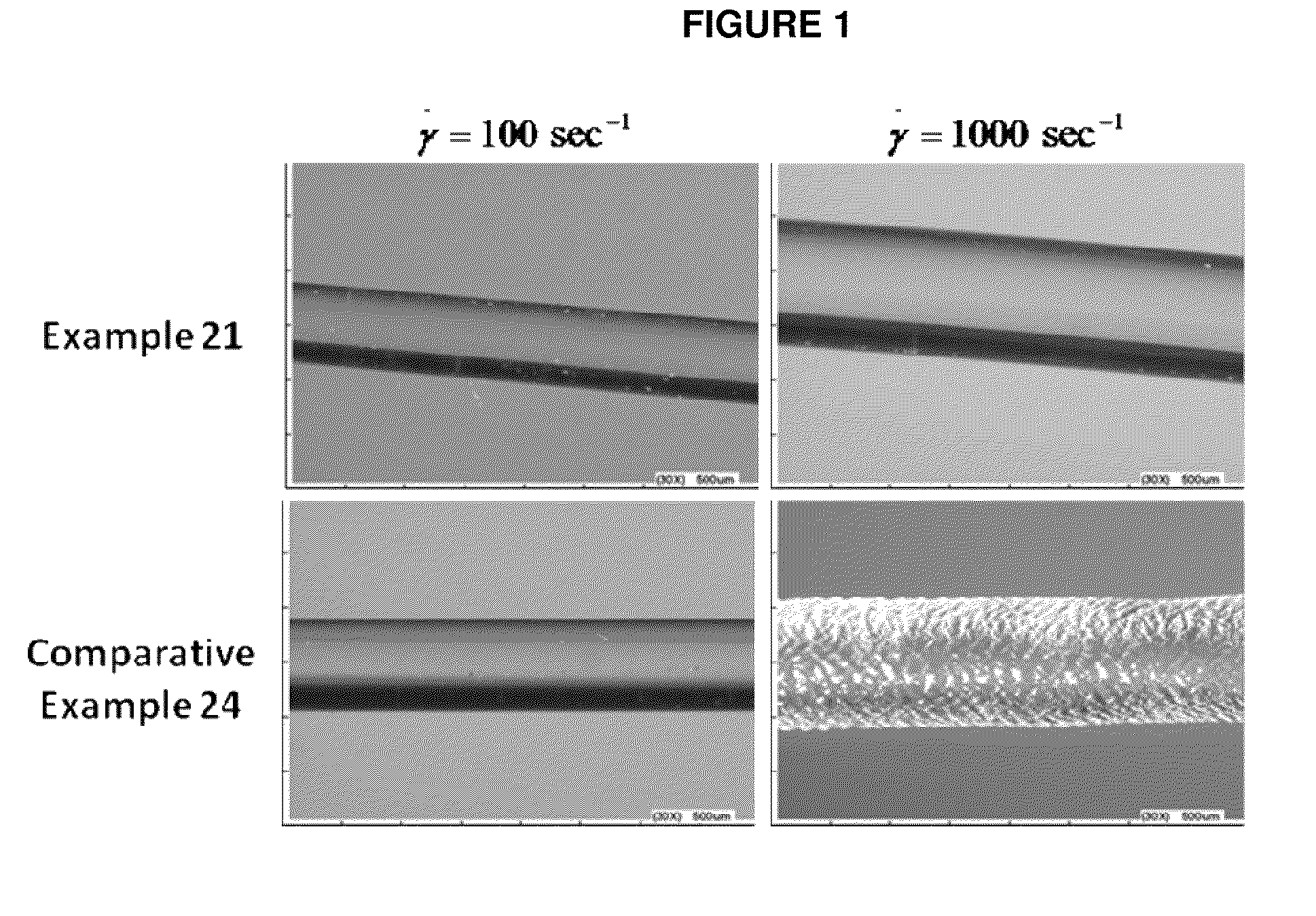Extrusion blow molded articles
a blow molding and article technology, applied in the field of polypropylene compositions, can solve the problems of inability to produce bottles with through-handles, undesirable defects in transparent bottles, and limited isbm process to uniform shapes, and achieve the effect of high resistance to sharkskin
- Summary
- Abstract
- Description
- Claims
- Application Information
AI Technical Summary
Benefits of technology
Problems solved by technology
Method used
Image
Examples
example 1
Comparative Example
[0514]This example illustrates the preparation of bottles using an extrusion blow molding process. The polymer used in this example contained 100% dimethyl terephthalate (DMT) as the dialkyl dicarboxylate moiety and a mixture of 69 mole % ethylene glycol (EG) and 31 mole % 1,4-cyclohexanedimethanol (CHDM) as the glycol component. The material also contained 0.18 weight % (0.20 mole %) trimellitic acid (TMA) moiety. The IV was 0.76 dL / g. The melt viscosity (MV) at 240° C. at 1 rad / sec was 45,777 poise. Neither a melting point (Tm) nor a crystallization half-time could be measured. Amorphous pellets of this composition were extrusion blow molded into bottles at a melt temperature of 230° C. (442° F.). The bottles were ground for dryer testing. A mixture of 3% flake of this composition in PET flake caused severe clumping in the dryer and completely stopped flow from the dryer. A blend of 1 weight % did not impede flow but did show moderate clumping.
example 2
Comparative Example
[0515]This example illustrates the preparation of bottles using an extrusion blow molding process. The polymer used in this example contained 100% DMT as the dialkyl dicarboxylate moiety and a mixture of 50 mole % EG and 50 mole % CHDM as the glycol component. The material also contained 0.18 weight % (0.22 mole %) TMA moiety. The IV was 0.76 dL / g. The MV at 240° C. at 1 rad / sec was 47,058 poise. The Tm was measured to be 193° C. The crystallization half-time of this material was measured to be greater than 300 minutes at 160° C. Amorphous pellets of this composition were extrusion blow molded into bottles at a melt temperature of 230° C. (442° F.). Bottles were ground for dryer testing. A mixture of 15 weight % flake of this composition in PET flake caused severe clumping in the dryer and completely stopped flow from the dryer. A mixture of 10 weight % flake of this composition in PET flake impeded flow and showed moderate clumping. Molded plaques containing 10 w...
example 3
Comparative Example
[0516]This example illustrates the preparation of bottles using an extrusion blow molding process. The polymer used in this example contained 100% DMT as the dialkyl dicarboxylate moiety and a mixture of 89.1 mole % EG and 10.9 mole % CHDM as the glycol component. The material also contained 0.18 weight % (0.19 mole %) TMA moiety. The IV was 0.74 dL / g. The Tm was measured to be 224° C. This composition could not be extrusion blow molded. In order to prevent crystallization of the parison, the material had to be processed at a temperature above its Tm and at this temperature the melt strength was very low. This composition would need a much higher IV in order to improve its melt strength, but it would be difficult to manufacture this composition to a higher IV without solid stating it.
PUM
| Property | Measurement | Unit |
|---|---|---|
| Fraction | aaaaa | aaaaa |
| Fraction | aaaaa | aaaaa |
| Percent by mass | aaaaa | aaaaa |
Abstract
Description
Claims
Application Information
 Login to View More
Login to View More - R&D
- Intellectual Property
- Life Sciences
- Materials
- Tech Scout
- Unparalleled Data Quality
- Higher Quality Content
- 60% Fewer Hallucinations
Browse by: Latest US Patents, China's latest patents, Technical Efficacy Thesaurus, Application Domain, Technology Topic, Popular Technical Reports.
© 2025 PatSnap. All rights reserved.Legal|Privacy policy|Modern Slavery Act Transparency Statement|Sitemap|About US| Contact US: help@patsnap.com

